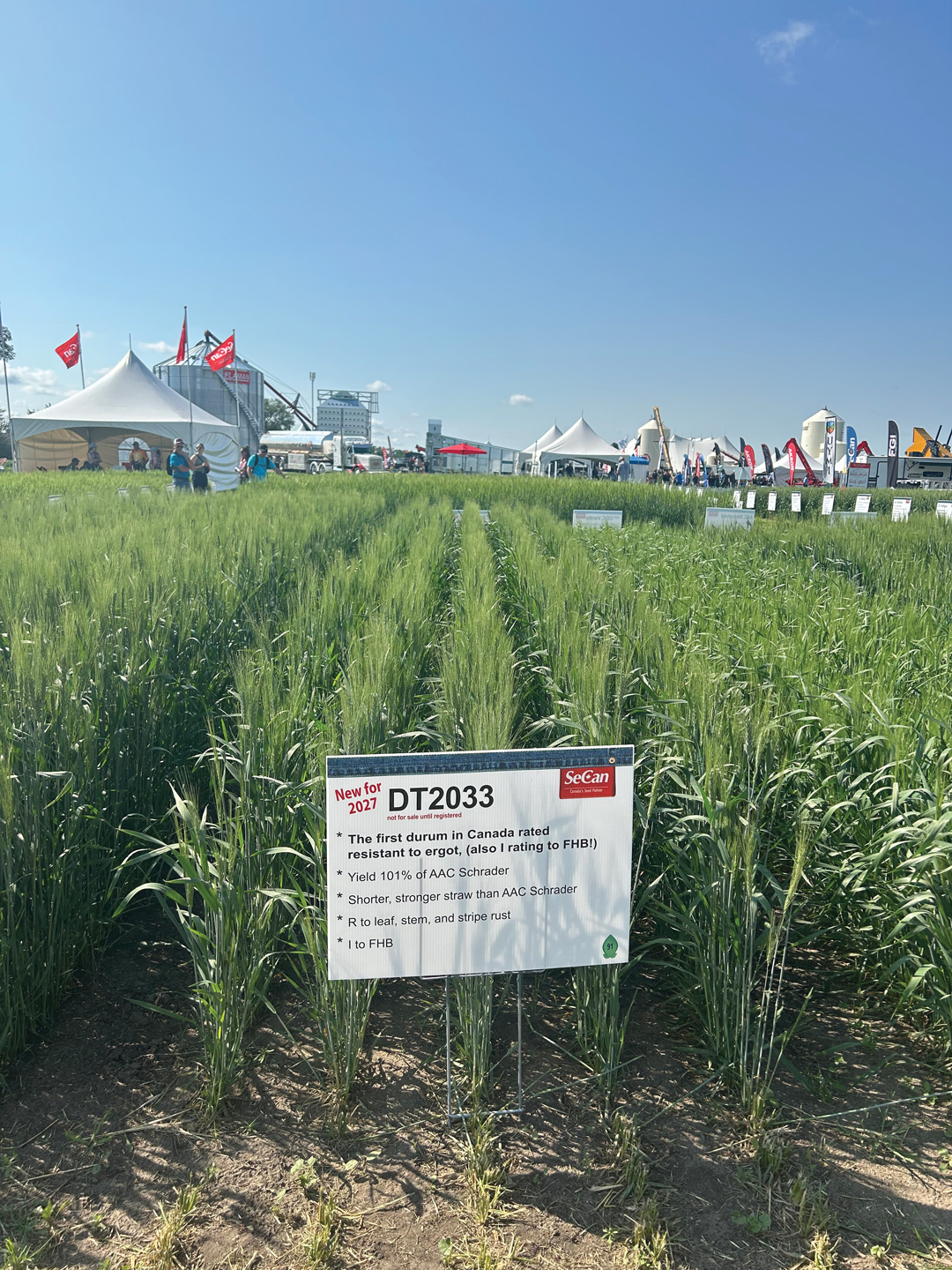NEW DURUM BETTER THAN EVER
BY TREVOR BACQUE • PHOTO COURTESY OF YUEFENG RUAN
Hard work by durum breeder Yuefeng Ruan at the Swift Current Research and Development Centre has paid off. New variety AAC Frontier has a resistant rating to ergot, leaf, stripe and stem rust as well as an intermediate rating for Fusarium head blight, the highest yet. Its FHB resistance is like that of AAC Schrader.
Development of AAC Frontier was supported through the Canadian Wheat Research Coalition–Agriculture and Agri-Food Canada Core Breeding Agreement, valued at $24.9 million over five years (2020–2025). Through CWRC, its founding organizations—Alberta Grains, Manitoba Crop Alliance and Saskatchewan Wheat Development Commission—invest in breeding activities that lead to the development of field-ready wheat varieties tailored to the needs of western Canadian farmers. AAC Frontier was registered by the CFIA in spring 2024 and will likely be ready for commercial seeding in 2027, according to Samia Berraies, the Centre’s associate director of research and technology. Trained as a wheat pathologist, she worked on the development of the variety, now in the process of seed multiplication. It has produced exciting field plot results over 26 site years of research. With a 6.1 per cent yield bump over check varieties, shorter height, good straw strength, low cadmium and high falling number, it checks just about every available box.
Frontier has been in the works for about a decade and Berraies likens the process to playing with building blocks. “Breeding is like a Lego game,” she said. “When you breed for a new variety, you have to keep in mind that you have to breed for three blocks: the farmer, the processor and the consumer.”
For the farmer, the dual traits of ergot and FHB resistance are welcome. While ergot sclerotia is typically not a huge issue on the Prairies, it can have devastating consequences if left unchecked. FHB is a greater issue, as those who grew durum during the largely disastrous 2016 growing season can attest.
The processor also requires a pure and clean product. Ergot sclerotia can be fatal to both humans and livestock at high levels. Less ominously, black flecks of ergot sclerotia are a real detriment to the third block, the consumer, who prefers bright yellow durum.
Canada exports most of its durum, which accounts for half of global trade in that crop. A quality product is a must. Shipments can be turned back at the local or international level if ergot is detected at a great enough level. One of Canada’s top customers, the European Union has the tightest allowable limits for detectable presence of ergot sclerotia.
“That’s why we have this, we are being proactive,” said Berraies. “When the ergot fungus comes, it will be confused and not know how to infect the plant.”
The breeding process used the latest in molecular technology, including genome sequencing and gene expression analysis. It allowed Ruan and Berraies to be precise in their work. “It’s important we’re not selecting blindly,” she said. “That part of the genome that carries that resistance, we can track it. We apply the marker and say, ‘Yes, this line’s genes are of interest.’ When we do our selection, it’s not only based on phenotypic data. It’s strengthened with genetic data.”
Cereals Canada also welcomes the arrival of the new variety. A durum variety with ergot resistance and intermediate resistance to FHB will help minimize or possibly eliminate trade issues or concerns.
“If we have an ergot resistant durum, it really could help ensure Canadian exports meet international safety and trade standards, and that can help us maintain our competitive edge,” said Krista Zuzak, Cereals Canada director of crop protection and production. “It’s very exciting because it also does have that stack of traits. Having that aggregate resistance in durum is crucial for helping maintain our reputation for safe and quality grain here in Canada, as well.”







Comments